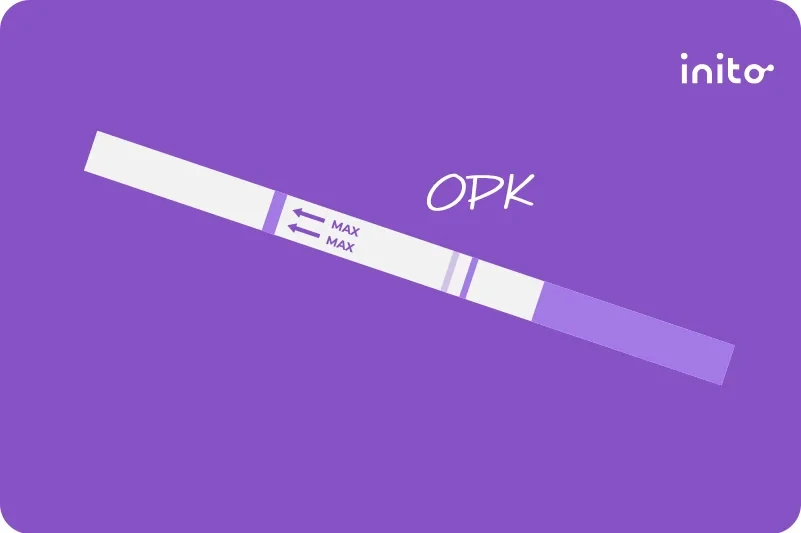Content table
Pregnancy testing can be notoriously stressful.
If you’re about to take a pregnancy test, perhaps one of your worries is whether or not your test will be reliable.
The truth is that at-home pregnancy tests work 99% of the time if you take them at the right time and follow the manufacturer’s instructions. But often, certain user errors lead to inaccuracies.
To avoid any potential testing problems, let’s go over what not to do before taking a pregnancy test.
What not to do before taking a pregnancy test?
For the most accurate results with your pregnancy test, follow these key reminders:
1. Don’t forget to check the expiration date
Did you know that pregnancy tests expire? The average shelf life of a home pregnancy test is about 1 to 3 years from the date of manufacture. The exact time depends on the brand and how sensitive the test is.
You may be antsy to test right away. But do yourself a favor and don’t skip this quick yet critical step because using an expired test could give you inaccurate results. Look for the expiration date on the box the test(s) came in or on the wrapper of the individual test as well.
2. Avoid drinking too much water
Normally, staying hydrated is a good thing. But for pregnancy testing, drinking too much water (or fluids in general) could dilute the concentration of hCG in your urine.
In order to get a positive pregnancy test result, your hCG levels will need to be higher than 20 mIU/mL. A concentration lower than this threshold will be too low to be detected (even if you are pregnant).
In the very early stages of pregnancy just after implantation, your levels of hCG (the pregnancy hormone) are quite low.
So it would be fairly easy for extra water intake to throw off an at-home pregnancy test reading at this stage. But don’t worry—this can be easily avoided!
A good route to take is to use your first-morning urine (FMU). If you are pregnant, this will ensure that your urine is concentrated enough for the pregnancy hormone hCG to be detected by the test.
3. Avoid testing later in the day
As mentioned, in the very beginning of pregnancy when your hCG levels are just beginning to rise, the amount is rather small.
The later in the day that you test, the greater the chance is that you’ll have diluted urine and the pregnancy test won’t be able to detect enough hCG.
This could cause you to get a false negative test result (meaning the test says you’re not pregnant but you actually are). Again, this is why FMU is your best bet for pregnancy testing.
4. Don’t alternate between different home pregnancy test brands
Different brands of home pregnancy tests have varying levels of sensitivity. This means that some tests can detect lower amounts of hCG than others. Different brands also have variations in the dyes used and in the way their pregnancy tests are manufactured.
Why does this matter? Well, if you do a test with one brand and then switch to another brand, you could get two different results because of the different sensitivity levels.
Let’s consider this example. Brand A has an hCG threshold of 20 mIU/mL, and Brand B has an hCG threshold of 50 mIU/mL. You are very early on in your pregnancy and your hCG levels are 44 mIU/mL. On Brand A’s test strip, you’ll see a positive result, but on Brand B’s test strip, you’ll see a negative result.
So if you want to avoid this confusion? Stick to the same brand for all your tests so you can consistently track your hCG trend and avoid confusion!
5. Don’t test too soon
When it comes to pregnancy testing, it’s important to wait enough days past ovulation (DPO). Testing too soon in the two-week wait can give you unreliable results.
In order for a pregnancy to become official, implantation must be successful. This is when the fertilized egg attaches to your uterine lining, and it happens anywhere from 6 DPO to 12 DPO. But after implantation, it takes time for your rising hCG levels to reach an amount high enough for a test to detect.
So when’s the best time to test? Try to wait until after your missed period before taking a home pregnancy test. This will ensure that hCG has enough time to climb to a detectable level. (We know it can be hard to wait, but it will help avoid potentially confusing results!)
Read More : Pregnancy Testing : How Soon After Ovulation Can You Test?
6. Don’t rely on a single pregnancy test result
Whether you get a positive or negative result on your first pregnancy test, it’s a good idea to test again in a few more days to a week. Here’s why:
If you get a negative result at first, it’s possible that it’s too early and your hCG levels are too low to be picked up on an at-home pregnancy test. When you wait a couple days though, your hCG levels have time to rise to a detectable amount.
If you get a positive result the first time, still test again in a few days just to make sure the test line is darker or that it still shows “pregnant.” In a healthy pregnancy, your hCG levels should double about every 2 days after the fertilized egg implants. So taking a pregnancy test again can ensure that the pregnancy actually “stuck.”
After getting a positive confirmation? Reach out to your doctor to schedule your first prenatal appointment. (It’s happening!)
Read More : Positive Pregnancy Test Then Negative Next Day?
7. Don’t take a pregnancy test if undergoing fertility treatment
When you’re undergoing a fertility treatment that involves taking a medication like the hCG trigger shot, you could get a false positive result. This is because the human chorionic gonadotropin from the trigger shot can remain in your system for up to two weeks.
So if you test while there’s still residual hCG in your system, the pregnancy test will detect hCG even if you’re not actually pregnant.
In these cases, your healthcare provider or fertility specialist may have you come in for a blood pregnancy test. Or they’ll tell you when you can take a home pregnancy test.
8. Avoid reading your pregnancy test results too early or too late
The moments before reading a pregnancy test result can be filled with much apprehension. This can make it tempting to look at the test earlier than you’re supposed to or perhaps to avoid looking at it altogether.
But if you check too early or too late, you could misread your result. Let’s break down how this happens:
What if you read your pregnancy test too early?
It takes time for the test to react with the hCG from your urine. So checking too early could give you a false negative result.
For example, if the directions say to wait 2 minutes, and you check at 45 seconds? You could see a negative result even if you are pregnant.
What if you read your pregnancy test too late?
When you check your result after the test window has passed, you risk seeing an evaporation line, or an “evap” line. When a negative test has been sitting out for too long, the liquid can evaporate. Sometimes the salts that remain on the test from your urine can form a faint colorless line.
An evap line is not a positive pregnancy test. It’s an invalid result. So if there’s a chance you mistook an evaporation line for a positive test, take another test to be sure.
And if you’re really struggling to tell the difference? Study the chart below to understand the key differences between faint positives and evaporation lines.
| Faint positive result | Evaporation line | |
| Color | Same as the control line | Colorless or gray |
| Time | Will appear within the timeframe listed on the manufacturer’s instructions | Could appear anywhere from a few minutes to an hour after testing |
| Action plan | Test again in a couple days | Throw away the test and use a new one |
To avoid any misreadings, read the test’s instructions beforehand so you know exactly how long to wait before checking the result. Then set a timer for that amount of time!
Know more: Evaporation Line on a Pregnancy Test
Takeaways
Your journey to conception is unique, and so is your body. As much as you can, avoid comparing yourself and your results to others during this time. Your hormone values will differ from those of other women, and that’s totally fine.
Definitely lean on others for support if you need to—the Inito Facebook group is a great place for that. But try not to get lost in the details of someone else’s experience. It’s likely to be different from yours.
And of course, be sure to avoid the user errors outlined in this article to give yourself the most reliable pregnancy test results! Here’s a recap of common pregnancy testing mistakes and how you can avoid them:
Common User Error | How to avoid |
Testing with an expired test | Check the expiration date before buying or taking a test. |
Having too much water before testing | Avoid consuming too many fluids, take your pregnancy test first thing in the morning. |
Testing late in the day | Test with first morning urine (FMU). |
Testing too early in your menstrual cycle | Ideally, wait until after your missed period before taking a pregnancy test. |
Reading your test results too late or too early | Read the manufacturer’s instructions before testing and read the results in the suggested window. |
Using different test brands | Stick with one brand for all your pregnancy tests. |
Not confirming your results | Test again in a few days to a week. If positive, make an appointment with your OB. |
Testing while on fertility medications | Talk to your doctor about when you can test at home. Wait at least two weeks from the trigger shot before testing. |

FAQs
Potentially. Each pregnancy test will come with specific user instructions to get valid results. Some tests direct you to place the strip in your urine stream for a few seconds. Other tests have you dip the strip in a cup of a specified amount of urine. Also keep in mind that pee that is too diluted could also give an invalid result.
If you are still in the two week wait (between ovulation and your missed period), it’s better to test in the morning. First morning pee is less likely to be diluted and hence will show a higher concentration of hCG.












